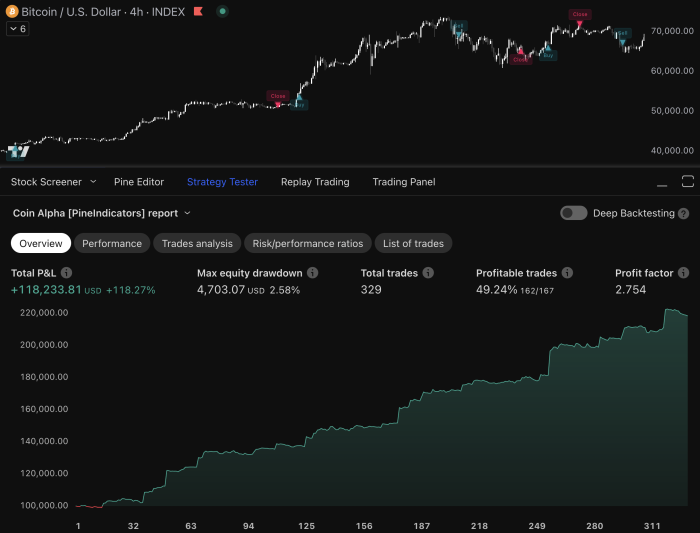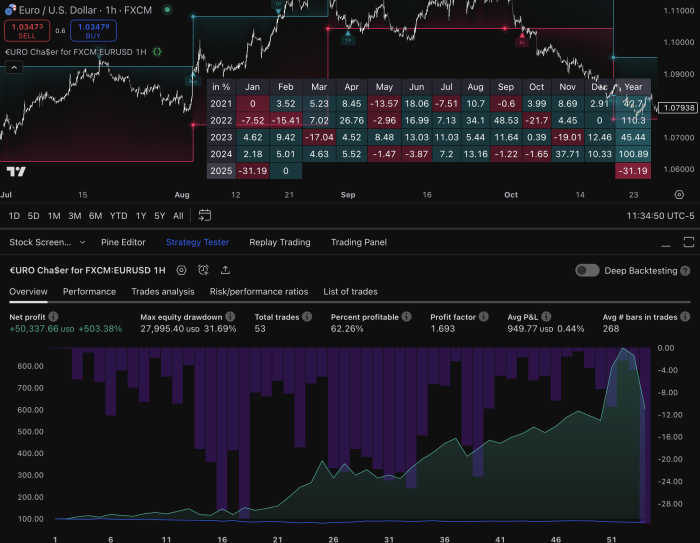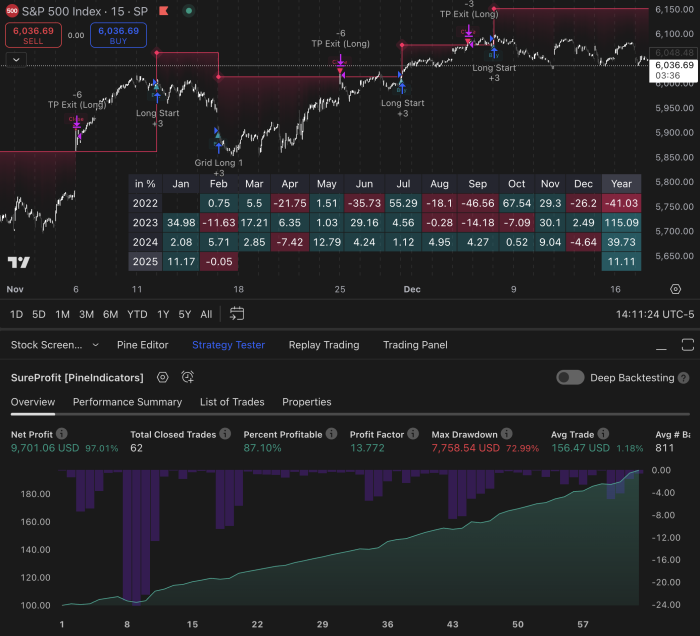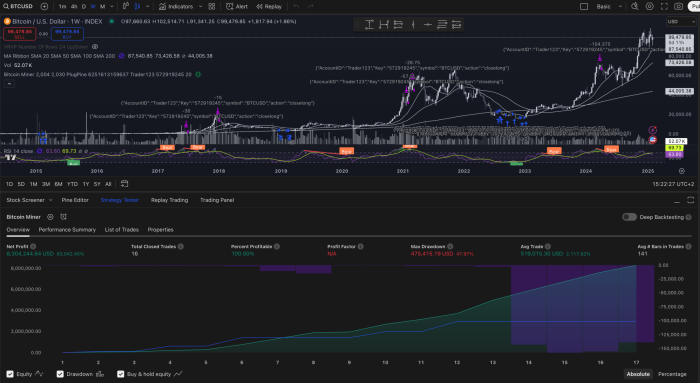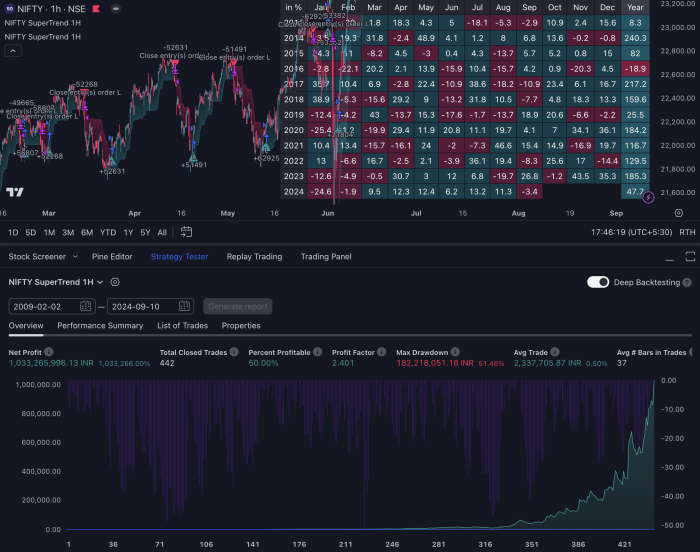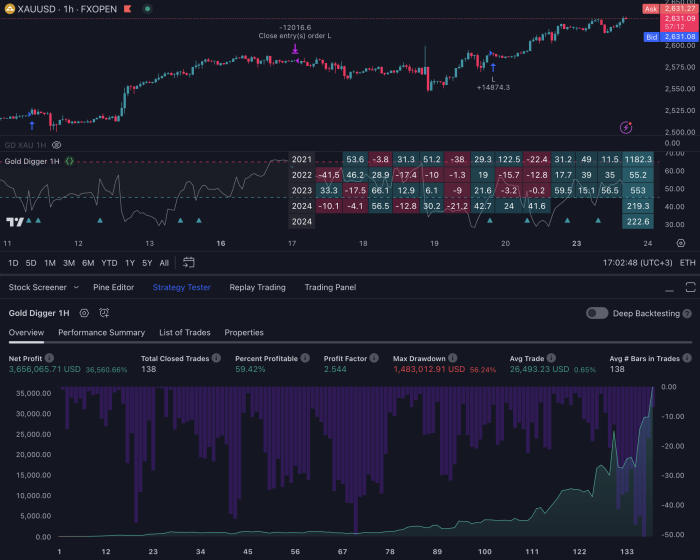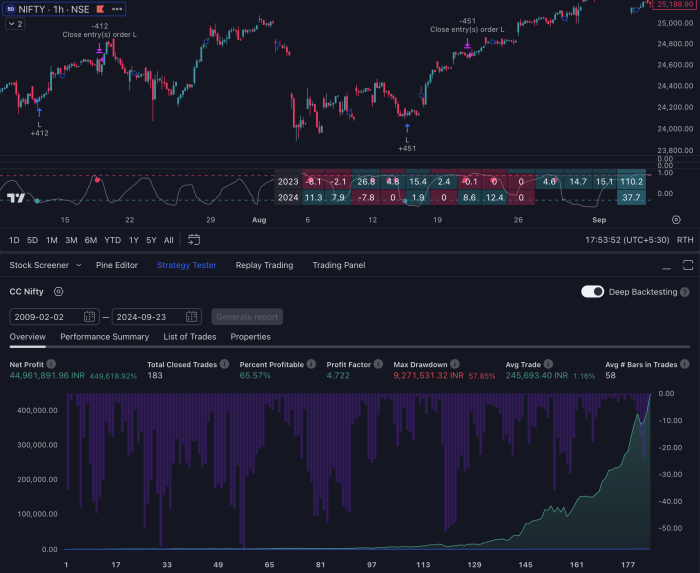Introduction
Trading success depends on making decisions quickly, which is why non-lagging systems are essential for every trader. Reliable Non-Lagging Pine Systems are a major breakthrough in trading technology, allowing traders to react to market changes almost instantly.
These systems, created using Pine Script on the TradingView platform, eliminate the usual delay seen in many technical indicators. By analyzing price data more effectively, they offer:
- Real-time market insights
- Faster signal generation
- Reduced false signals
- Enhanced trend identification
- Improved entry and exit points
Non-lagging systems achieve this through complex algorithms that adjust indicator calculations to minimize delay between price changes and signal generation. The result? You get clearer, more actionable trading signals that can help you stay ahead of market movements.
This guide will introduce you to non-lagging Pine systems, including:
- Zero Lag Moving Averages (ZLEMA)
- Heiken Ashi combinations
- Adaptive indicators
- Effective trading rules
- Pine Script customization
- Integration techniques
You’ll discover how to use these powerful tools to create flexible trading strategies that adjust to shifting market conditions. Whether you’re a day trader or swing trader, these systems can empower you to make better trading choices with increased certainty.
For example, by using TradingView breakout strategies, you can take advantage of significant price shifts. Likewise, TradingView automation for consistent trades can optimize your trading routine for improved effectiveness. Additionally, studying TradingView stock strategies can offer valuable understanding into stock trading dynamics.
Understanding Non-Lagging Pine Systems
Non-lagging Pine systems are a major improvement in technical analysis, providing traders with real-time information without the delayed signals that are typical in traditional indicators. These systems are great at capturing market movements as they occur, allowing for quicker and more precise trading decisions.
The main advantage of non-lagging systems is how they analyze price data differently from standard indicators. While regular indicators often introduce lag by treating historical data points equally, non-lagging systems use advanced algorithms to give more importance to recent price action.
Key Features of Non-Lagging Pine Systems
Here are the key features that set non-lagging Pine systems apart:
- Rapid Response Time: Quick adaptation to price changes
- Reduced Signal Delay: Minimal gap between price movement and indicator response
- Enhanced Accuracy: Better precision in trend identification
- Customizable Parameters: Flexible settings for different trading styles
Zero Lag Moving Averages (ZLEMA)
ZLEMA is a key component in non-lagging trading systems. This innovative indicator addresses the main drawback of traditional moving averages – price lag. By using advanced mathematical calculations, ZLEMA eliminates the delay usually associated with moving averages.
How ZLEMA Works
Here’s how ZLEMA works:
- Calculates the difference between current price and historical data
- Applies a correction factor to compensate for lag
- Produces a smoother, more responsive moving average line
Traditional EMAs vs ZLEMA
Here’s a comparison between traditional EMAs and ZLEMA:
| Aspect | Traditional EMA | ZLEMA |
|---|---|---|
| Signal Speed | Slower | Faster |
| Lag Time | Significant | Minimal |
| Price Sensitivity | Lower | Higher |
| False Signals | Fewer | Slightly More |
ZLEMA proves particularly effective in:
- Trend Detection: Earlier identification of trend reversals
- Support/Resistance: More accurate price level readings
- Entry/Exit Points: Timely signals for trade execution
- Volatility Analysis: Better response to market volatility
The practical application of ZLEMA in Pine Script allows traders to create custom indicators with minimal lag, develop responsive trading strategies, generate more timely trading signals, and adapt to different market conditions. For those looking to leverage such capabilities, exploring resources like Pine Indicator’s Forex indicator scripts for TradingView can be immensely beneficial.
However, trading with ZLEMA requires understanding its unique characteristics and avoiding common pitfalls. It’s crucial to avoid common trading strategy mistakes to boost success in financial markets.
Furthermore, utilizing tools such as the TradingView strategy tester can provide valuable insights into the effectiveness of your strategies. If you’re interested in mastering Pine Script for developing these advanced trading strategies, consider seeking assistance from Pine Script experts.
2. Heiken Ashi and Non-Lag EMA Combination
Heiken Ashi candles transform traditional price data into a smoother, more filtered representation of market movements. These specialized candlesticks calculate average prices using a unique formula that considers the open, high, low, and close values of current and previous periods. The result? A cleaner chart that filters out market noise and highlights dominant trends.
When paired with Non-Lag EMA, Heiken Ashi candles create a powerful synergy for trend identification:
- Color Patterns: Heiken Ashi candles display consistent color sequences during strong trends – consecutive green candles signal uptrends, while red candles indicate downtrends
- Body Size: Larger candlestick bodies suggest stronger trend momentum
- Non-Lag EMA Confirmation: The Non-Lag EMA serves as a dynamic support/resistance level, validating the trend direction shown by Heiken Ashi patterns
Here’s a practical application of this combination:
- Uptrend Signal: Look for green Heiken Ashi candles above the Non-Lag EMA
- Downtrend Signal: Watch for red Heiken Ashi candles below the Non-Lag EMA
- Trend Reversal: Identify potential reversals when candle colors change and price crosses the Non-Lag EMA
This system excels in volatile markets where traditional indicators might generate false signals. The smoothing effect of Heiken Ashi, combined with the responsiveness of Non-Lag EMA, helps traders identify high-probability trade setups while filtering out market noise.
3. Adaptive Indicators in Non-Lagging Systems
Adaptive indicators are game-changers in trading, as they have the ability to automatically adjust to market volatility and price action patterns. Unlike traditional indicators that rely on fixed parameters, these dynamic tools respond to real-time market conditions, providing traders with precise entry and exit signals across different market phases.
Key Features of Adaptive Indicators:
- Self-adjusting parameters based on market volatility
- Variable sensitivity levels during trending and ranging periods
- Real-time calculation updates without historical lag
- Multi-timeframe analysis capabilities
The power of adaptive indicators lies in their ability to maintain accuracy during both high and low volatility periods. When market conditions shift, these indicators automatically recalibrate their parameters, eliminating the need for manual adjustments.
Dynamic Alerts System Integration:
- Price breakout notifications
- Volatility threshold alerts
- Trend reversal signals
- Multiple timeframe confirmations
Traders can set customized alert conditions that trigger notifications when specific market conditions align. These alerts work across multiple timeframes, providing comprehensive market coverage and reducing the risk of missed opportunities.
The integration of adaptive indicators with non-lagging systems creates a responsive trading environment. By combining volatility-adjusted signals with zero-lag calculations, traders can identify potential market moves before traditional indicators display their signals.
Alert Configuration Examples:
pine
// Sample Pine Script Alert Syntax
alertcondition(crossover(fastMA, slowMA) and volatility > threshold)
alertcondition(priceBreakout and volumeSpike and trendAlignment)
These dynamic systems excel in capturing market movements across different trading sessions and market conditions, providing traders with reliable signals regardless of market volatility levels. For those interested in leveraging the power of Pine Script for creating customized Pine Script indicators for stocks, the possibilities are virtually limitless.
Implementing Effective Trading Rules with Non-Lagging Systems
Trading rules serve as the backbone of successful non-lagging systems, providing structure and consistency to your trading decisions. Here’s a practical framework for implementing reliable trading rules:
1. Trend Direction Confirmation
- Use ZLEMA crossovers to identify primary trend direction
- Wait for price action to align with the ZLEMA slope
- Confirm trend strength through volume analysis
2. MACD Signal Integration
- Enter trades when MACD histogram shows momentum in trend direction
- Look for MACD line crossovers above/below zero line
- Use MACD divergence to spot potential trend reversals
3. Risk Management Parameters
- Set position size based on account risk percentage (1-2% recommended)
- Place stop-loss orders at recent swing highs/lows
- Use trailing stops aligned with non-lagging indicators
Practical Rule-Based Strategy Example:
pine
// Long Entry Rules
longCondition = zlema > zlema[1] and // Upward ZLEMA
macd > signal and // MACD above signal
close > zlema // Price above ZLEMA
// Short Entry Rules
shortCondition = zlema < zlema[1] and // Downward ZLEMA
macd < signal and // MACD below signal
close < zlema // Price below ZLEMA
Advanced Rule Combinations:
- Multiple timeframe confirmation
- Price action pattern recognition
- Volume threshold requirements
These rules create a systematic approach to market analysis, reducing emotional decision-making and improving trade consistency. By combining non-lagging indicators with specific entry and exit criteria, you establish a clear framework for trade execution.
Your trading system gains reliability through the synergy of multiple confirmation factors. Each rule acts as a filter, helping you identify high-probability trade setups while avoiding false signals in challenging market conditions.
To enhance your strategy further, mastering optimal exit strategies can significantly minimize losses and maximize profits. Additionally, if you’re just starting out, consider exploring some proven trading strategies for beginners.
Moreover, it’s crucial to adapt your approach according to market conditions. This could involve mastering effective trading strategies for various market scenarios or focusing on best practices for crypto trading.
Lastly, leveraging the right trading signals can provide valuable insights that further refine your trading strategy.
Customizing Non-Lagging Pine Systems with Pine Script
Pine Script offers extensive customization capabilities that empower you to fine-tune your non-lagging trading systems. The script’s flexibility allows you to modify key parameters and create personalized indicators tailored to your trading preferences. You can explore a range of free Pine Script indicators to get started.
Essential Customizable Parameters:
- Moving average periods
- Price source selection (close, open, high, low)
- Alert threshold values
- Color schemes for visual clarity
- Lookback periods for calculations
The ability to adjust these parameters directly impacts the responsiveness and reliability of your trading system. You can experiment with different settings to find the optimal balance between signal speed and accuracy.
Risk Management Through Customization:
pine
//@version=5
strategy(“Custom Non-Lag System”, overlay=true)
period = input.int(14, “MA Period”, minval=1)
source = input.source(close, “Price Source”)
threshold = input.float(1.0, “Alert Threshold”)
This code snippet demonstrates how to implement customizable inputs in your Pine Script. These parameters allow you to:
- Adjust the sensitivity of your indicators
- Set appropriate risk levels
- Define specific entry and exit conditions
- Create custom alert configurations
To delve deeper into risk management techniques, consider exploring some advanced Pine Script tutorials.
The true power of Pine Script lies in its ability to adapt to different market conditions and trading styles. By incorporating user-defined variables, you can create dynamic systems that respond to changing market environments while maintaining their non-lagging characteristics.
Trading success often depends on finding the right balance between system responsiveness and reliability. Through careful parameter optimization, you can develop a trading system that aligns with your risk tolerance and trading objectives. For those interested in mastering these techniques, enrolling in a comprehensive Pine Script course could be beneficial.
Additionally, if you’re looking to implement advanced Pine Script strategies or want to learn how to effectively backtest your scripts, we provide resources that can assist you in achieving TradingView success with robust backtesting and risk management techniques.
Integrating Other Analysis Techniques into Non-Lagging Trading Strategies
Price action analysis adds a powerful dimension to non-lagging trading systems. You can enhance your trading decisions by incorporating these key price action elements:
Support and Resistance Levels
- Identify dynamic price zones where your non-lagging indicators intersect with historical support/resistance
- Use price action confirmations at these levels to validate your system’s signals
Candlestick Patterns
- Look for reversal patterns like pin bars or engulfing candles near your non-lagging indicator crossovers
- Combine these patterns with your system’s alerts for stronger trade setups
Volume Analysis
- Track volume spikes during trend changes identified by your non-lagging indicators
- Use volume confirmation to assess the strength of breakouts and potential reversals
Market Structure
- Analyze higher timeframe market structure to align with your non-lagging system’s signals
- Identify key swing highs and lows to determine optimal entry and exit points
Chart Patterns
- Watch for classic patterns like triangles, flags, or head and shoulders formations
- Use these patterns in conjunction with your non-lagging indicators to spot high-probability trades
By layering these price action techniques with your non-lagging system, you create a robust trading approach that combines the speed of non-lagging indicators with the reliability of proven chart analysis methods. This multi-faceted strategy helps you capture opportunities while maintaining risk management principles.
Moreover, integrating top Pine Script strategies into your trading can further enhance your results. These strategies allow you to use custom indicators and effective techniques on TradingView, which can significantly improve your trading performance. Additionally, if you’re interested in buying crypto, there are specific strategies available that cater to the unique aspects of cryptocurrency trading.
Conclusion
Reliable Non-Lagging Pine Systems are a powerful evolution in modern trading technology. These systems deliver the responsiveness traders need in today’s fast-moving markets, transforming raw price data into actionable insights with minimal delay.
The combination of:
- Zero Lag Moving Averages
- Heiken Ashi analysis
- Adaptive indicators
- Custom trading rules
- Pine Script flexibility
Creates a robust framework for precise market analysis and timely trade execution. You can use these tools to build sophisticated trading systems that adapt to market conditions while maintaining reliability.
The customization potential of Pine Script empowers you to fine-tune each component according to your trading style and risk preferences. For instance, you can explore various Pine Script trading strategies, or delve into the intricacies of implementing EMA crossover strategies which are proven to be effective.
Take action now: Start experimenting with non-lagging indicators on your TradingView charts. Test different combinations of analysis techniques like the Heiken Ashi, adjust your trading rules, and optimize your system’s parameters. You might want to consider purchasing some advanced TradingView indicators that can further enhance your trading strategies. Your journey toward more effective trading decisions begins with embracing these innovative tools and making them your own.
FAQs (Frequently Asked Questions)
What are non-lagging Pine systems and why are they important in trading?
Non-lagging Pine systems are trading strategies that utilize indicators designed to provide timely signals without the delay typically associated with traditional indicators. Their significance lies in enhancing traders’ ability to make informed decisions quickly, thereby improving overall trading performance on platforms like TradingView.
How does Zero Lag Moving Average (ZLEMA) differ from traditional moving averages?
ZLEMA is a non-lagging indicator that aims to reduce the delay seen in traditional moving averages by adjusting its calculation method. This allows ZLEMA to more accurately reflect current market conditions, making it a valuable tool for trend detection and decision-making in trading.
What benefits do Heiken Ashi candles provide when combined with non-lag EMA?
Heiken Ashi candles smooth out price data, reducing noise and providing clearer visual signals for trend analysis. When combined with non-lag EMA, this combination enhances the clarity of trading signals, helping traders identify trends more effectively.
What role do adaptive indicators play in non-lagging systems?
Adaptive indicators adjust their parameters based on market volatility and changing conditions, allowing traders to receive timely alerts and multi-timeframe signals. This responsiveness helps traders stay ahead of market movements and make better-informed decisions.
How can I customize my non-lagging Pine systems using Pine Script?
Pine Script offers extensive customization options for non-lagging systems, allowing traders to modify settings such as moving average periods or alert conditions. Tailoring these parameters to fit individual risk tolerance levels is crucial for optimizing trading strategies.
Why should I integrate other analysis techniques into my non-lagging trading strategies?
Incorporating multiple analysis techniques, such as price action analysis, can enhance the effectiveness of non-lagging systems. This integration provides a holistic view of market conditions and improves the robustness of trading strategies, leading to better performance.

